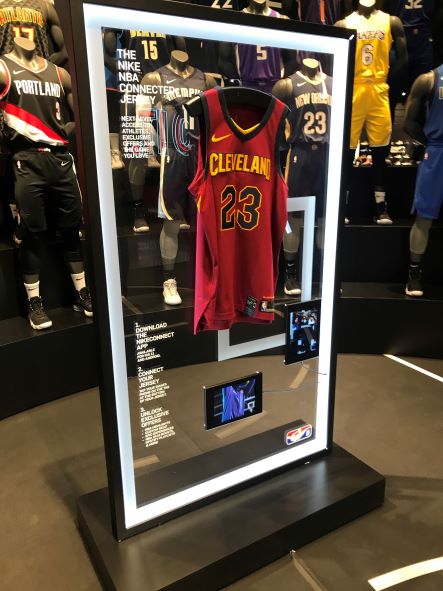Exploring How Motion Sensors Can Boost Customer Interaction and Sales in Retail Displays
By Yan Luo | Samtop Display
👉 Motion sensors in retail displays can transform static setups into interactive experiences that attract and engage customers. When used strategically, motion sensors can increase dwell time, improve product visibility, and potentially lead to higher sales.
At Samtop, we specialize in integrating motion sensor technology into retail displays that create memorable and engaging shopping experiences.


1. Are You Struggling to Keep Customers Engaged in Retail Displays?
In a fast-paced retail environment, keeping customers engaged is a growing challenge. Traditional static displays often fail to capture the attention of busy shoppers, making it harder for brands to create meaningful connections with their audience.
2. The Challenge of Creating Lasting Engagement in Retail Spaces
Retail brands need innovative ways to stand out and keep customers engaged. As consumers become more accustomed to interactive experiences, static displays are becoming less effective. How can you make your retail displays more engaging and dynamic?
3. Harnessing the Power of Motion Sensors for Interactive Retail Displays
At Samtop, we integrate motion sensor technology into retail displays to provide an interactive and engaging shopping experience. By adding motion sensors, retailers can attract attention, increase customer interaction, and improve product visibility—all of which can lead to higher sales.
📊 Key Benefits of Motion Sensors in Retail Display Units
1. Attracting Attention and Creating a "Wow" Factor
Motion sensors are an excellent way to grab attention. By automatically triggering an action when a customer approaches, motion sensors create an element of surprise that encourages customers to stop and engage with the display.
How Motion Sensors Work:
- Trigger Action: Motion sensors detect customer movement and activate lighting, videos, or sound effects to draw attention.
- Instant Engagement: The immediate activation of the display creates a “wow” factor that encourages customers to interact, resulting in more foot traffic and longer engagement times.
Tip:
Use motion sensors to activate lighting, audio, or visual effects strategically, ensuring they capture attention without overwhelming the customer.
2. Increasing Dwell Time and Interaction
Once customers are drawn to the display, motion sensors help extend the time they spend engaging with the products. The interactive nature of motion-sensor displays encourages customers to explore and interact further.
How Motion Sensors Enhance Interaction:
- Interactive Features: Motion sensors can trigger interactive elements, such as touchscreens, videos, or product demos when customers approach.
- Real-Time Engagement: Shoppers are more likely to engage with products, watch demonstrations, or explore product features.
Tip:
Incorporate dynamic features like a product demo video or LED lights that activate to showcase product features when customers approach.
3. Personalization and Data Collection
Motion sensors can provide a personalized experience and offer valuable data insights, which are crucial for driving sales and improving marketing strategies.
Personalization Features:
- Triggered Promotions: When a customer approaches the display, motion sensors can trigger special promotions or discounts tailored to the product.
- Data Insights: By tracking customer movements, brands can gather data on customer behavior, such as when and where they interact with the display.
Tip:
Use motion sensors to activate location-based promotions or suggest relevant products based on customer interaction patterns.
4. Enhancing Brand Experience and Storytelling
Motion sensors can also be used to enhance storytelling and create a seamless, immersive experience for customers.
How to Use Motion Sensors for Storytelling:
- Dynamic Displays: Create a dynamic storytelling sequence that evolves as customers interact with the display. The display can introduce a product, and as the customer moves closer, the story unfolds to reveal more information.
- Emotional Connection: Use audio or visual elements that trigger emotional responses, deepening the connection between the customer and the brand.
Tip:
Develop an immersive journey for customers that enhances their connection with the brand and shares a compelling product story.


